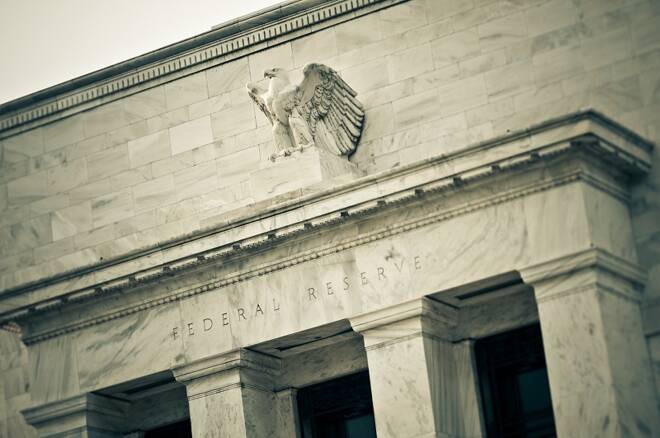Advertisement
Advertisement
Did Powell Put 50bp Rate Cut Back in Play?
By:
Cutting rates 50-basis points carries risk. Will it be an emergency cut? Is there something out there we don’t see yet? Did Powell cave to pressures from the White House? These may be questions investors will be asking ahead of the July 30-31 Federal Reserve monetary policy meeting.
While listening to Federal Reserve Chairman Jerome Powell’s testimony before the House Financial Services Committee on Wednesday, I was surprised by his negative vibe toward U.S. economic growth so much that I started to pick up signals for not one 25-basis point rate cut at the end of July, but perhaps a 50-basis point rate cut.
I couldn’t believe this was coming from the same guy who dampened the chances of a half-a-point rate cut on June 25. I had to conclude that he must be seeing some major negative developments approaching that could tip over the economy.
While Powell seemed to be on a path toward cutting rates at the end of the month, the belief is not being shared by several of his regional Fed presidents, and the labor market, for that matter. However, there is one fellow in the White House who is probably applauding Powell’s dovish remarks.
Seth Carpenter, chief US economist at UBS Securities, Inc. in New York was even more vocal in his concerns over the change in Powell’s tone from just two weeks ago.
Carpenter said, “If the economy is really slowing down, and you are hit by shocks that could tip you over,” a quarter-point cut “is not a defensible move.” He further added, “They are shifting from data dependence to risk management.”
Powell’s Risks
In recapping his remarks, I came up with three risk factors that Powell identified. He mentioned business sentiment, a global slowdown in manufacturing, and a persistently low inflation rate.
Investor Expectations for 50bp Cut Rise
Following the release of Powell’s prepared remarks, short-dated Treasury rates fell sharply along with the U.S. Dollar. Gold rallied and U.S. equity markets hit record highs. Furthermore, investors solidified their expectations for at least a quarter-point rate cut at the end of this month. The market also began to price a 58% chance of a 50-basis point cut.
Additionally, Morgan Stanley economists said they expect the Federal Reserve to make a half percentage point rate cut to head off downside risks and the impact of a weakening global economy and trade tensions.
In a note, the economists said, “Risks to the outlook remain skewed to the downside.” They further added, a strong policy response is “necessary to guard against risks of a further, sharper loss of economic momentum. Weak incoming data, lingering trade tensions, and preventing both financial conditions from tightening and a non-linear adverse impact on growth are key reasons for a front-loaded adjustment.”
The Debate Begins
Not everyone is on the same page with Powell, who left the possibility of a 50-basis point cut wide open. Of course, President Trump wants rates lower as do financial market investors.
St. Louis Fed President James Bullard, who voted in favor of a rate cut in June, doesn’t see the need for such an aggressive move.
“I would argue for a 25-basis point cut at the next meeting,” Bullard told reporters on Wednesday. “I don’t like to prejudge the meeting too much, but if the meeting were today or tomorrow that is what I would be recommending.”
Additionally, regional Fed presidents in Richmond, Dallas, Philadelphia and Cleveland have all cast doubt on the need to cut interest rates at all.
What Will Investors Think?
Cutting rates 50-basis points carries risk. Will it be an emergency cut? Is there something out there we don’t see yet? Did Powell cave to pressures from the White House? These may be questions investors will be asking ahead of the July 30-31 Federal Reserve monetary policy meeting.
About the Author
James Hyerczykauthor
James Hyerczyk is a U.S. based seasoned technical analyst and educator with over 40 years of experience in market analysis and trading, specializing in chart patterns and price movement. He is the author of two books on technical analysis and has a background in both futures and stock markets.
Advertisement
